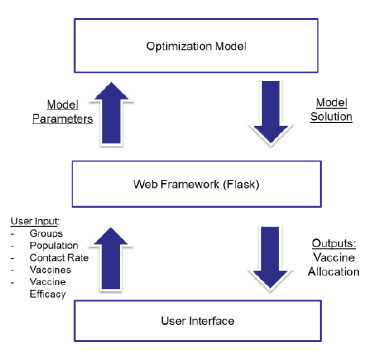

The COVID-19 pandemic posed a huge impact to the global economy and on the environment. Recent developments in battling the pandemic include the availability of vaccines for public use. The distribution of vaccines requires systematic planning as supplies to a given region can be limited. Process integration techniques such as mathematical programming can be applied to develop solutions for systematic planning of COVID-19 vaccine distribution. To enable the use of mathematical programs for policymakers, a graphical user interface is needed. In this study, a web-based application (app) for allocating vaccines is presented, utilizing non-linear programs to optimally distribute vaccines to different population groups. Two models are incorporated in the app: (1) a model that minimizes the number of vaccines required to slow down the spread of the disease, i.e., reduce the reproductive number to less than one and (2) a model that determines the optimal allocation at the minimum reproductive number. The optimization models for the app were written in Python using the Pyomo package while the graphical user interface is written in JavaScript with the use of the React library. The optimization models are accessed through an API served using a Python web server utilizing the web framework Flask. A case study is used to illustrate how the models work in the web application.
Keywords: Allocation, Web-Based